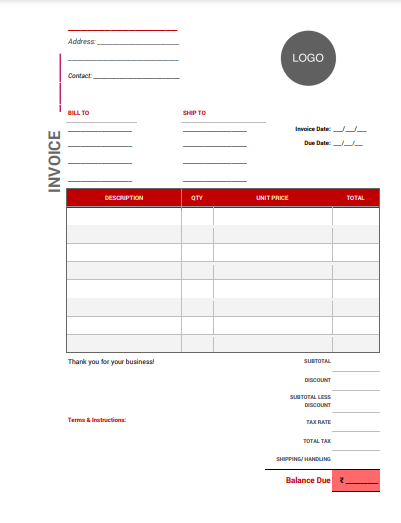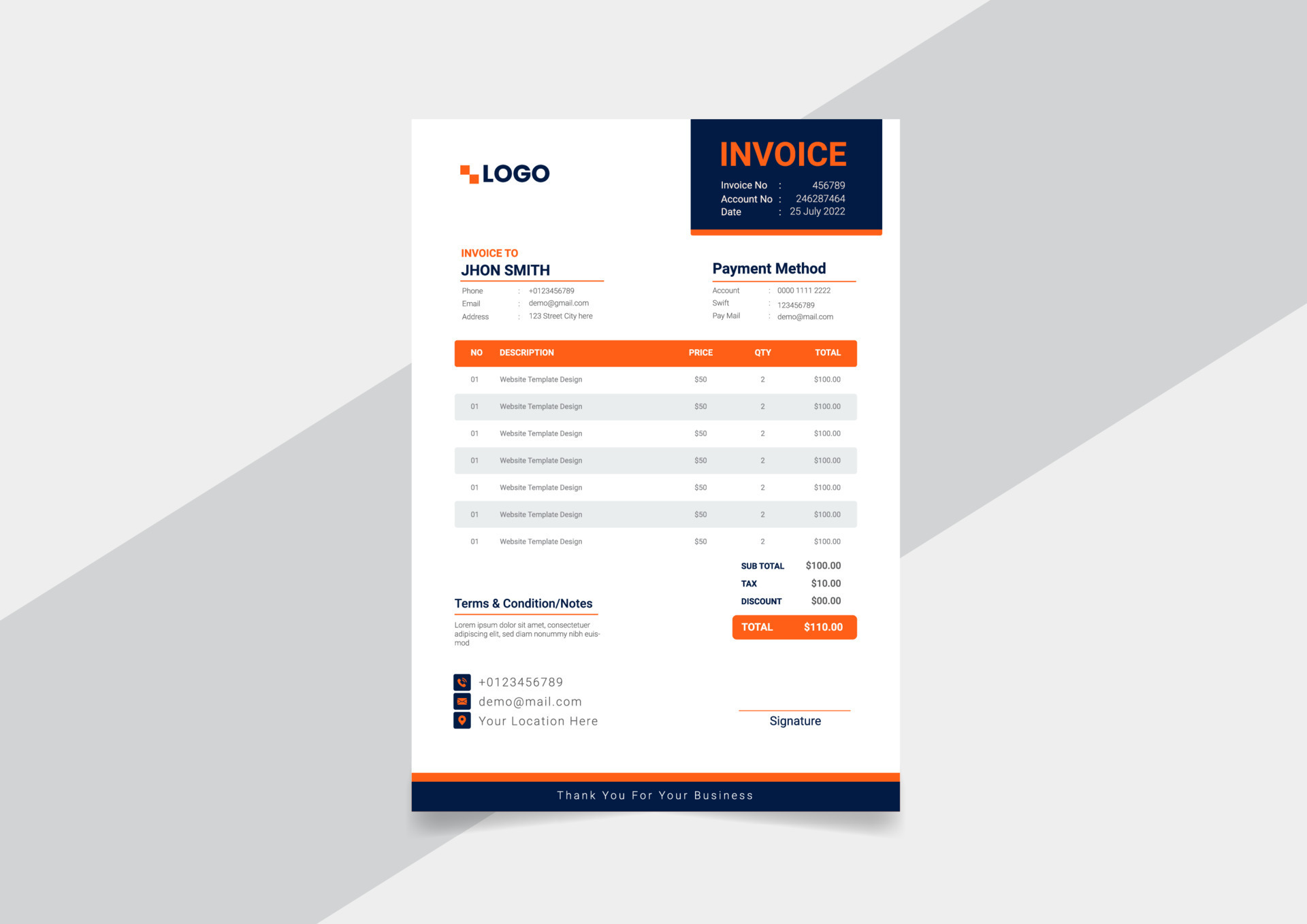The format for a GST (Goods and Services Tax) invoice typically varies depending on the country’s regulations. However, I can provide you with a general outline of what a GST invoice might include. Here’s a basic format for a GST invoice:
- Header:
- Invoice Title: “Tax Invoice” or “GST Invoice”
- Invoice Number: A unique identifier for each invoice
- Date: Date of issuance
- Seller’s Information: Name, address, GSTIN (Goods and Services Tax Identification Number), contact details
- Buyer’s Information: Name, address, GSTIN (if applicable), contact details
- Place of Supply: Location where the goods/services are delivered
- Invoice Details:
- Description of Goods/Services: Detailed description of each item or service provided
- HSN (Harmonized System of Nomenclature) Code: For goods, if applicable
- SAC (Services Accounting Code): For services, if applicable
- Quantity: Number of units provided
- Rate: Price per unit
- Total Amount: Quantity multiplied by rate for each item or service
- Taxable Amount: Total amount excluding taxes
- Tax Details:
- GST Rate: Percentage of GST applicable for each item or service (e.g., 5%, 12%, 18%, etc.)
- CGST (Central Goods and Services Tax): Amount of CGST applicable
- SGST (State Goods and Services Tax): Amount of SGST applicable
- IGST (Integrated Goods and Services Tax): Applicable for interstate transactions
- Total Tax Amount: Sum of all applicable taxes
- Grand Total:
- Total Invoice Amount: Taxable amount plus total tax amount
- Payment Details:
- Payment Terms: Payment due date, mode of payment, etc.
- Bank Details: Bank name, account number, IFSC code, etc.
- Additional Information:
- Any other relevant information or terms and conditions
- Signature:
- Authorized Signatory: Signature of the person authorized to issue the invoice
This format may need to be adapted based on specific requirements and regulations in your country or jurisdiction. Additionally, businesses may use accounting or invoicing software that generates invoices automatically according to the prevailing regulations. Always ensure compliance with local tax laws and regulations when issuing invoices.

Can you revise invoices issued before GST?
Certainly! When revising invoices issued before the implementation of GST (Goods and Services Tax), you’ll need to ensure that they comply with the new tax regime. Here’s a revised format for invoices issued before GST:
- Header:
- Invoice Title: “Revised Invoice”
- Invoice Number: A unique identifier for the revised invoice
- Date: Date of issuance of the revised invoice
- Seller’s Information: Name, address, GSTIN (Goods and Services Tax Identification Number), contact details
- Buyer’s Information: Name, address, GSTIN (if applicable), contact details
- Original Invoice Number: The number of the invoice being revised
- Date of Original Invoice: Date of issuance of the original invoice
- Invoice Details:
- Description of Goods/Services: Detailed description of each item or service provided
- Quantity: Number of units provided
- Rate: Price per unit
- Total Amount: Quantity multiplied by rate for each item or service
- Taxable Amount: Total amount excluding taxes
- Tax Details:
- Previous Tax Details: CGST, SGST, or any other applicable taxes as per the previous tax regime
- Revised Tax Details: GST Rate applicable after GST implementation
- GST Amount: Total GST applicable after the revision
- Grand Total:
- Total Invoice Amount: Taxable amount plus total GST amount after revision
- Payment Details:
- Payment Terms: Payment due date, mode of payment, etc.
- Bank Details: Bank name, account number, IFSC code, etc.
- Additional Information:
- Reason for Revision: Brief explanation for revising the invoice, such as GST implementation
- Any other relevant information or terms and conditions
- Signature:
- Authorized Signatory: Signature of the person authorized to issue the revised invoice
Make sure to maintain records of both the original invoice and the revised invoice for proper documentation and compliance purposes. Always consult with a tax professional or accountant for specific guidance related to revising invoices in accordance with tax regulations.
How to personalize GST invoices?
Personalizing GST invoices involves customizing them to include specific branding elements and information relevant to your business. Here’s how you can personalize GST invoices:
- Customize Header:
- Include your business logo at the top of the invoice to reinforce your brand identity.
- Use your business colors and fonts to match your brand style.
- Add Business Information:
- Clearly display your business name, address, contact number, and email address.
- Include your GSTIN (Goods and Services Tax Identification Number) prominently.
- Tailor Invoice Numbering:
- Develop a numbering system for your invoices that aligns with your business needs.
- Ensure each invoice has a unique identifier for tracking purposes.
- Include Buyer Information:
- Add the buyer’s name, address, and contact details.
- If the buyer is GST-registered, include their GSTIN.
- Itemize Goods/Services:
- Clearly list each item or service provided, along with a description and quantity.
- Include the price per unit and the total amount for each item/service.
- Display Tax Details:
- Break down taxes such as CGST (Central Goods and Services Tax), SGST (State Goods and Services Tax), or IGST (Integrated Goods and Services Tax) as applicable.
- Show the GST rate applied to each item/service.
- Total Amount Calculation:
- Calculate the total taxable amount by summing up the prices of all items/services.
- Calculate the total GST amount separately and add it to the taxable amount to determine the total invoice amount.
- Payment Terms and Conditions:
- Clearly outline payment terms, including due date and accepted payment methods.
- Include any relevant terms and conditions, such as return policies or late payment fees.
- Add Personalized Messages or Notes:
- Include a personalized thank-you message or a note of appreciation for the customer’s business.
- Digital Options:
- If sending invoices electronically, consider adding interactive features like clickable links to your website or contact details for easy communication.
- Review and Test:
- Before finalizing your personalized GST invoice template, review it thoroughly to ensure accuracy and completeness.
- Test print or send a sample invoice to verify that all elements appear as intended.
By personalizing your GST invoices, you can enhance professionalism, reinforce brand identity, and provide clarity to your customers regarding their transactions.
Latest Post:
- Whitelabel Demo
- Domain Mapping
- Pan card software with code
- NSDL eKYC PAN Card Application
- NSDL eSign PAN Card Application
| Facebook page | Click here |
| YouTube channel | Click here |
| Instagram page | Click here |
| Whatsapp channel | Click here |
| Website | https://www.ekendraportal.in |

